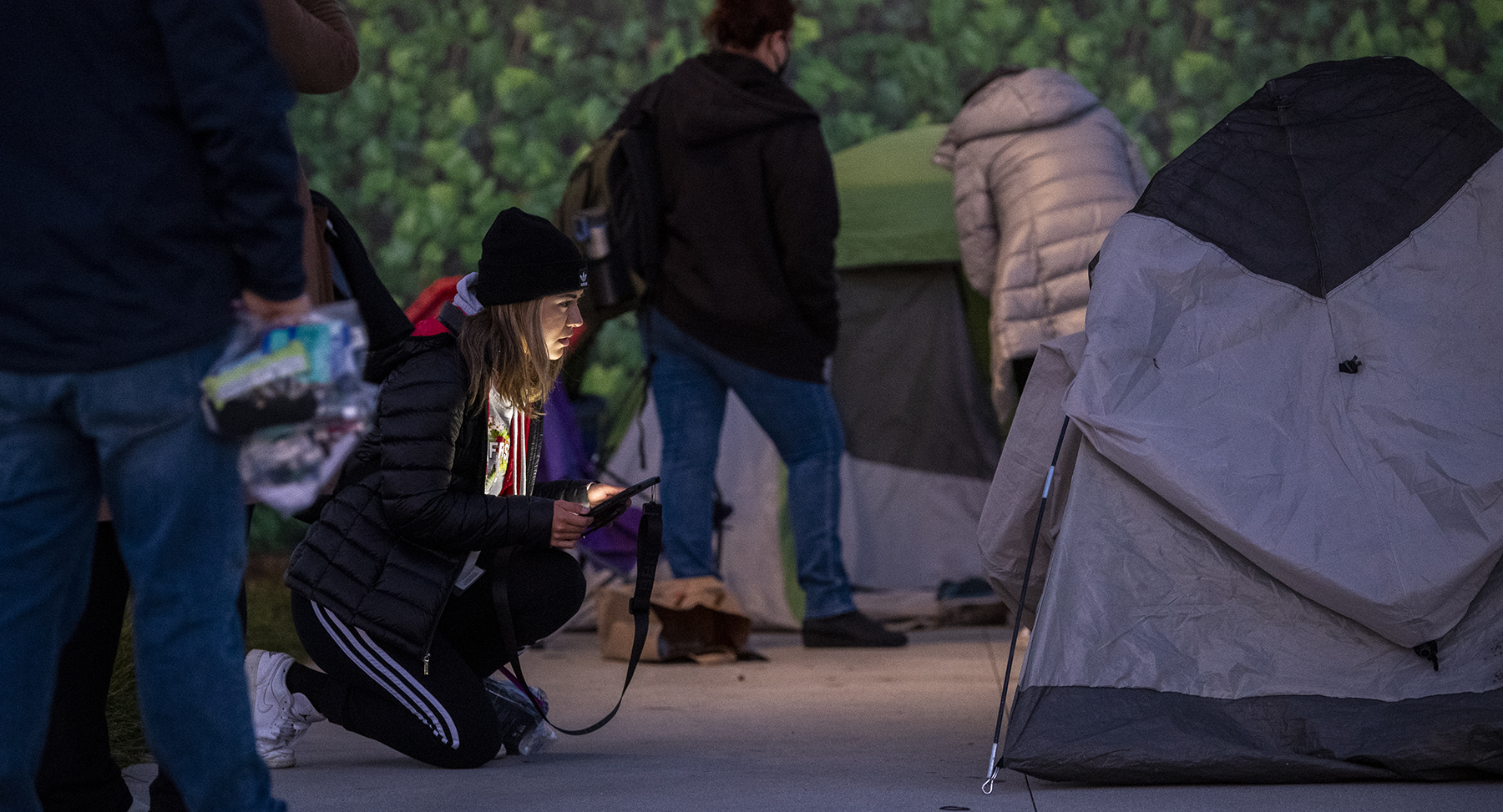As the sun rose early Thursday, a team of city staff was stopping to talk to more than a dozen people who were bundled under blankets and sleeping bags along the walls of the Billie Jean King Main Library or in tents pitched on the grass of Lincoln Park.
But rather than rousting the campers, the city workers were there to ask questions and offer them McDonald’s and 7-Eleven gift cards for their trouble.
The questions were part of Long Beach’s annual point-in-time count, which tallies the number of unhoused people on the streets and in temporary shelters and gathers information that the city uses to guide its decisions on services and programs to reduce homelessness. It is also critical data used to get federal, state and county funding to provide these services.
Last year’s count showed a 62% rise in homelessness since 2020.
Thursday’s early morning count—volunteers assembled at 4:30 a.m. at The Grand event venue before heading out in teams with maps of the areas they would be covering—was the culmination of months of preparation.
Staff at the city’s Homeless Services Bureau ramp up planning over the summer to prepare for the late-January event, said Alvin Teng, a special projects coordinator who is overseeing the point-in-time count.
The count actually began earlier this week. Specially trained outreach workers and personnel from the Police Department’s quality-of-life team visited harder-to-reach areas and larger encampments, and a tally of people in emergency shelters or with vouchers for motel stays started Wednesday night.
On Thursday, about 300 volunteers and city staff spread across Long Beach to survey people while about 30 more city workers ran logistics back at headquarters.
The nonprofit Long Beach Community Foundation’s entire five-person staff decided to volunteer for this year’s count because their organization has been focusing on homelessness for the past five years, foundation CEO Marcelle Epley said—and before the City Council declared a state of emergency earlier this month, they felt it had gotten “out of control.”
When one staffer mentioned helping with the tally, Epley said, “we all immediately nodded our heads and said we’re going to do our part.”
Once the teams were dispatched, unhoused individuals who were willing to talk with volunteers were asked about 35 to 40 questions about their demographics, physical or mental health issues, in what city they first became homeless, how long they’ve been without permanent housing and more.

One of those who agreed to provide information was 46-year-old Andrew Johnson (“Just like the former president,” he said), who’s been on the streets since 2014. He was working in Orange County, but he contracted HIV and things got worse from there, he said.
“You realize how limiting everything is. Marriage is out the window,” he said.
Johnson became depressed about his situation and turned to drugs, then he lost his housing. He didn’t know of any place he could stay in Orange County, he said, so he came here.
He’s maxed out his stays at several temporary shelters, so he tried to get comfortable with the idea of being “outside.”
The most difficult part is, “you lose your perception (of) time. I lost it so bad I didn’t know what month we were in,” Johnson said.
The teams conducting the count enter data from people like Johnson into a smartphone app, which funnels it to the city to compile and remove any duplication. Teng said it’s much easier than in the past, when the information would have been collected on paper and entered manually into a computer.
This year the effort has a dedicated data analyst, and “there is a lot more emphasis citywide on getting that data out sooner,” Teng said. Last year it took about five months for the city to release information from the point-in-time count.
After the results are in comes the hard part: How can the city use the data to meet people’s needs and get them into housing?
Johnson said he’d like to have a roof over his head, but he doesn’t have any income right now, so he’d need help with information and free resources.
Epley said she hopes the city will provide more trained staff to help connect people with services and shelter, because people’s needs vary and it can be a challenge to navigate the system alone.
“It seems like almost a one-to-one relationship that’s required, because everybody’s story is different,” she said.

